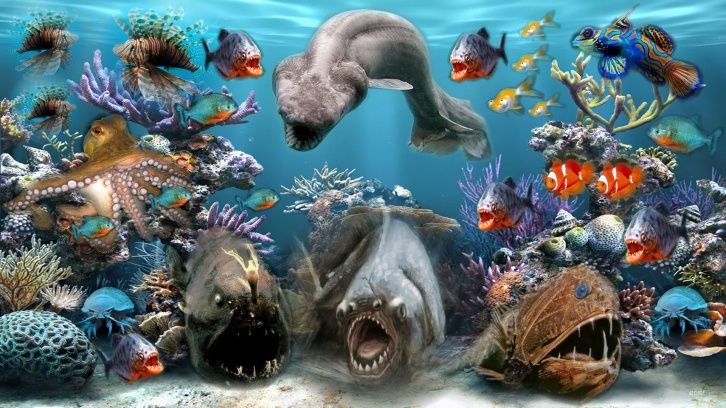
FAQ About Ocean Life

How do fish swim in schools?
Fish swimming in schools exhibit coordinated movements and synchronized behaviors that allow them to swim together in a cohesive group. Here are some key mechanisms that enable fish to swim in schools:
- Hydrodynamic Benefits: Swimming in a school offers hydrodynamic advantages for individual fish. By swimming in close proximity to one another, fish reduce the amount of water resistance they individually experience, making it easier for them to move through the water. The overall shape and movement of the school can create a "slipstream" effect that reduces drag and energy expenditure for each fish.
- Visual Cues: Fish in schools often rely on visual cues to maintain proper alignment and coordination. They can observe the movements and positions of neighboring fish and adjust their own swimming accordingly. This visual communication helps them maintain their relative positions within the school and respond rapidly to changes in direction or speed.
- Lateral Line System: Fish possess a sensory system called the lateral line that detects water flow and pressure changes. This system allows fish to sense the movements and behavior of nearby individuals, even in the absence of direct visual contact. It helps them maintain group cohesion and respond to the movements of their companions.
- Individual Responses to External Stimuli: Fish in schools are highly attuned to their surroundings and can quickly respond to external stimuli. If a predator approaches or there is a sudden change in the environment, individual fish can react and adjust their swimming pattern based on the behavior of nearby fish. This collective response enhances the overall maneuverability and survival of the school.
- School Leadership: Schools of fish often exhibit a hierarchical structure, with one or a few individuals leading the group. These leaders influence the direction and speed of the school's movement, and other fish within the school adjust their behavior to match the leaders' actions. Leadership roles can shift within the school, allowing for collective decision-making and coordinated movements.
